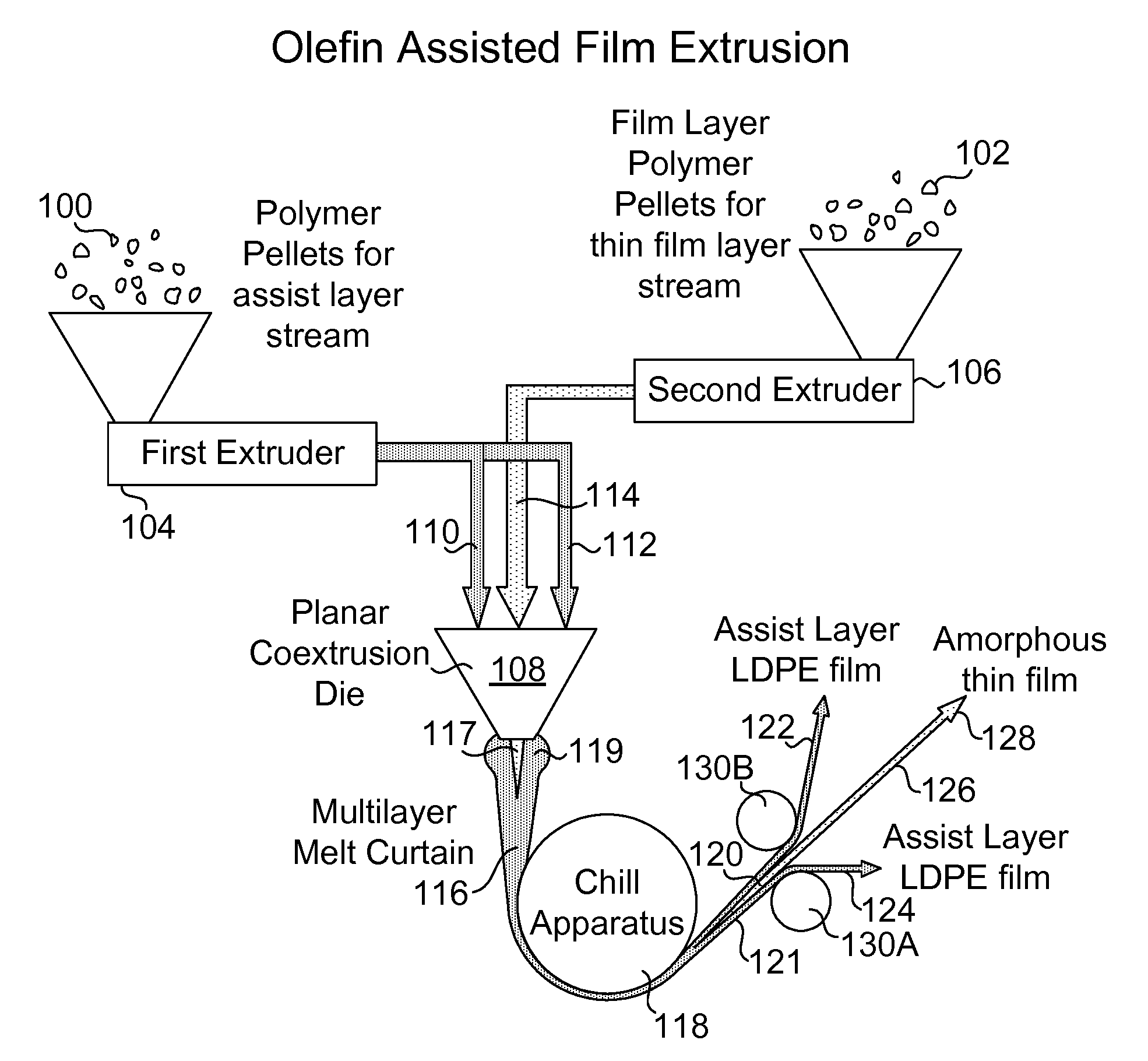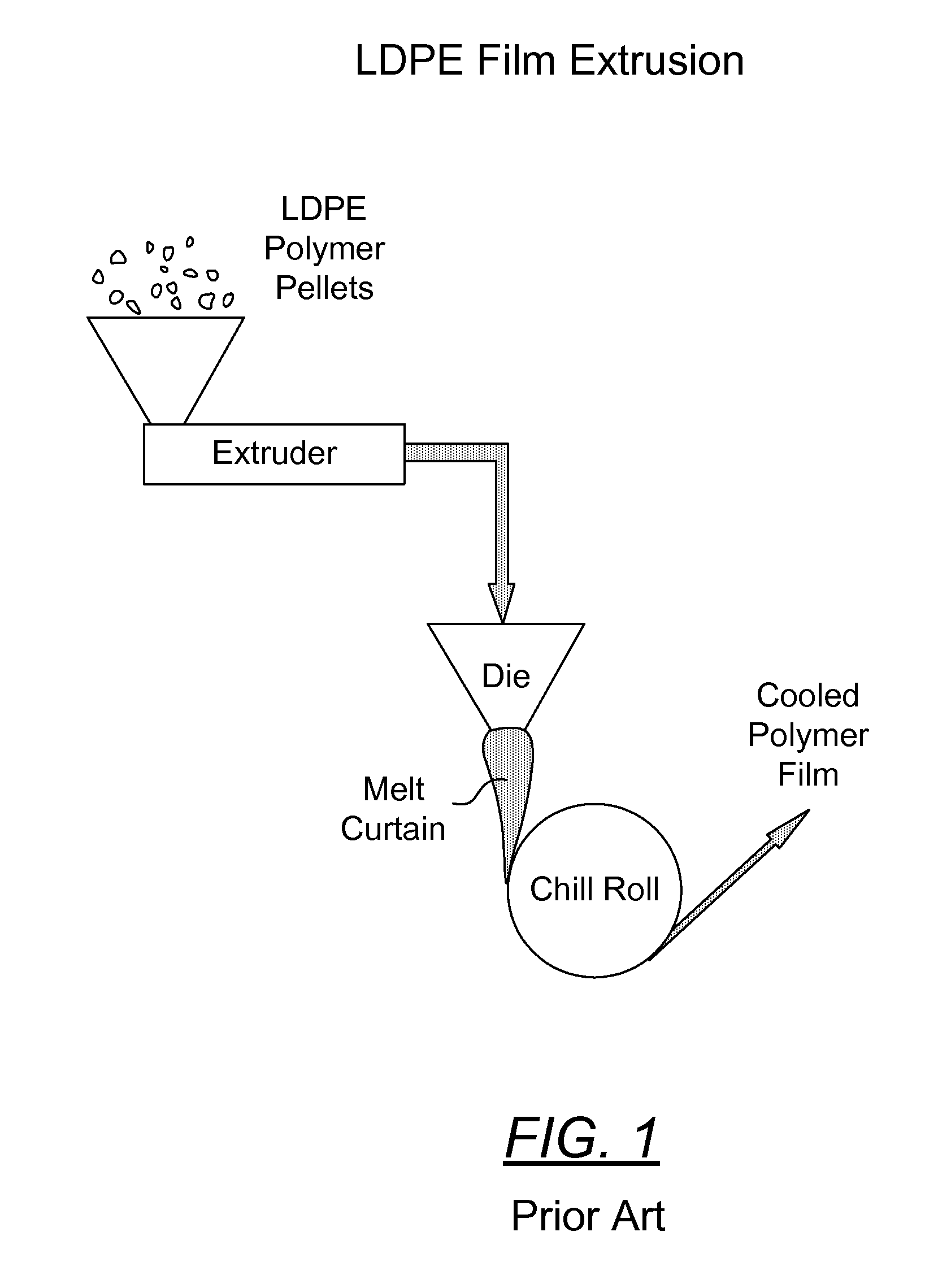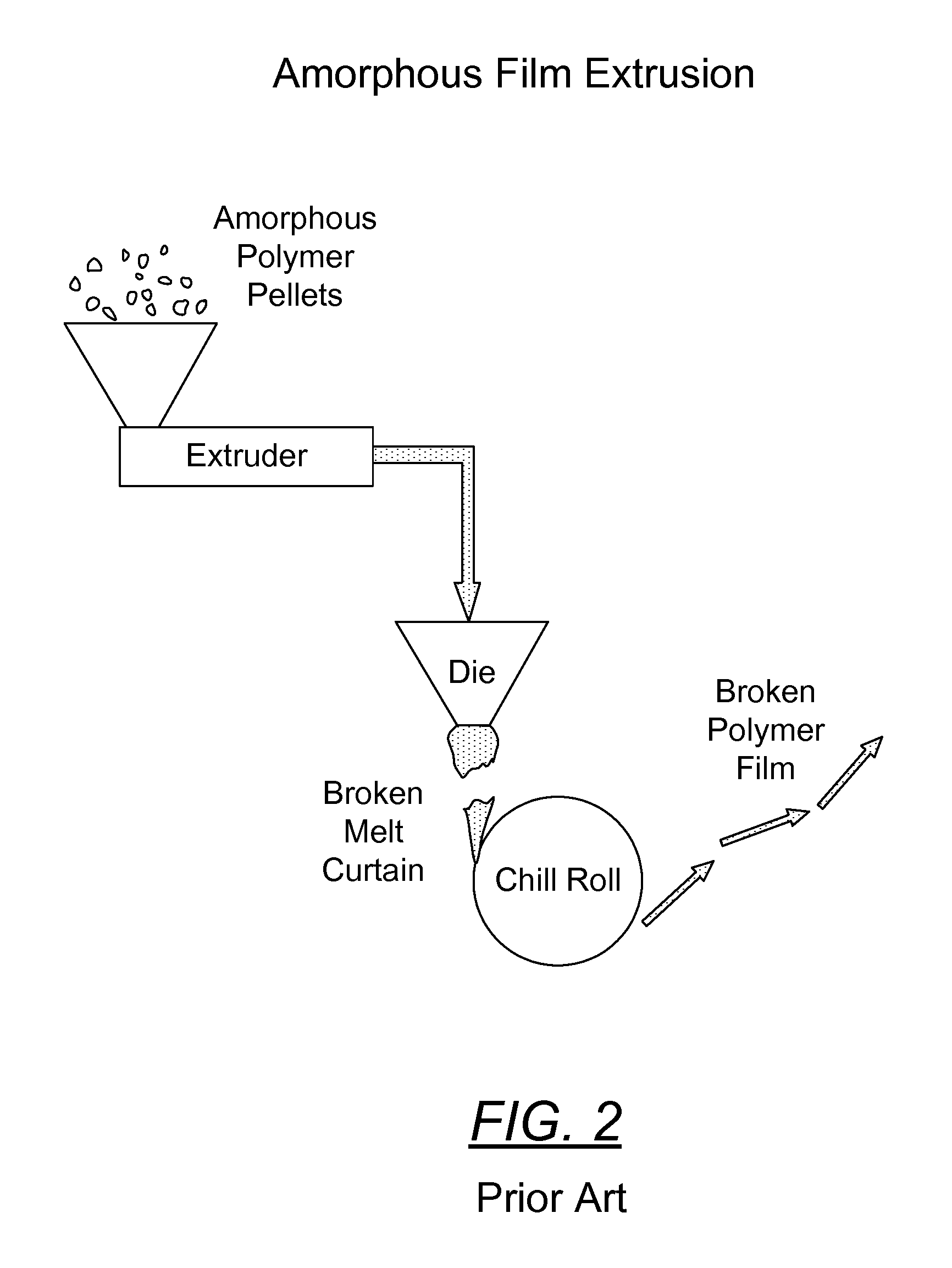Process For Manufacturing Free Standing Thermoplastic Polymeric Films
a manufacturing process and thermoplastic technology, applied in the field of polymer films, can solve the problems of damage to equipment, poor thickness variability of the resulting film, and distinct drawbacks of manufacturing techniques with respect to thin freestanding polymeric films, etc., to achieve uniform thickness, reduce thickness, and improve production efficiency
- Summary
- Abstract
- Description
- Claims
- Application Information
AI Technical Summary
Benefits of technology
Problems solved by technology
Method used
Image
Examples
example 1
[0174]A thin polycarbonate film was manufactured. The film is useful as a capacitor dielectric.
[0175]Polycarbonate pellets purchased from Mitsubishi were dried at 121 degrees Celsius for 12 hours. The polycarbonate pellets were fed into a 25 mm single screw extruder, with a melt temperature of 243 degrees Celsius. The screw on the extruder was a standard single screw with a Maddox mixer, and the screw speed was adjusted so as to obtain a rate of 22 g / min.
[0176]The assist layer was prepared using Na214 low density polyethylene (LDPE) purchased from Equistar corp. The LDPE was undried, and was fed into another 25 mm single screw extruder which was operated at melt temperature of 216 degrees Celsius. The screw on the extruder was a standard single screw with a Maddox mixer, and the screw speed was adjusted so as to get a rate of 45 g / min.
[0177]The two polymers were brought together in a standard coextrusion feedblock in an ABA structure, where A is the assist layer (low density polyeth...
example 2
[0180]Polycarbonate pellets purchased from Mitsubishi were dried at 121 degrees Celsius for 12 hours. The polycarbonate pellets were fed into a 25 mm single screw extruder, with a melt temperature of 243 degrees Celsius. The screw on the extruder was a standard single screw with a Maddox mixer, and the screw speed was adjusted so as to obtain a rate of 22 g / min.
[0181]The assist layer was prepared using Na214 low density polyethylene (LDPE) purchased from Equistar corp. The LDPE was undried, and was fed into another 25 mm single screw extruder which was operated at melt temperature of 216 degrees Celsius. The screw on the extruder was a standard single screw with a Maddox mixer, and the screw speed was adjusted so as to get a rate of 45 g / min.
[0182]The two polymers were brought together in a standard coextrusion feedblock in an ABA structure, where A is the assist layer (low density polyethylene) and B is the molten polycarbonate. Thus, the molten polycarbonate was in the center, and...
example 3
[0185]A thin acrylic film was made. The PMMA film is useful to enhance gloss of an injection molded device.
[0186]V044 polymethyl methacrylate (PMMA) purchased from Arkema Inc. was dried for 12 hours at 79 degrees Celsius. The PMMA pellets were fed into a 25 mm single screw extruder, with a melt temperature of 235 degrees Celsius. The screw on the extruder was a standard single screw with a Maddox mixer, and the screw speed was adjusted so as to obtain a rate of 23 g / min.
[0187]The assist layer was prepared using Na214 LDPE purchased from Equistar Corp. The LDPE was undried, and was fed into another 25 mm single screw extruder which was operated at melt temperature of 218 degrees Celsius. The screw on the extruder was a standard single screw with a Maddox mixer, and the screw speed was adjusted so as to get a rate of 45 g / min.
[0188]The two polymers were brought together in a standard coextrusion feedblock in an ABA structure, where A is the assist layer (LDPE) and B is the molten PMMA...
PUM
| Property | Measurement | Unit |
|---|---|---|
| Fraction | aaaaa | aaaaa |
| Thickness | aaaaa | aaaaa |
| Length | aaaaa | aaaaa |
Abstract
Description
Claims
Application Information
 Login to View More
Login to View More - R&D
- Intellectual Property
- Life Sciences
- Materials
- Tech Scout
- Unparalleled Data Quality
- Higher Quality Content
- 60% Fewer Hallucinations
Browse by: Latest US Patents, China's latest patents, Technical Efficacy Thesaurus, Application Domain, Technology Topic, Popular Technical Reports.
© 2025 PatSnap. All rights reserved.Legal|Privacy policy|Modern Slavery Act Transparency Statement|Sitemap|About US| Contact US: help@patsnap.com



